Jordan Travel Tips
First: Jordan is awesome. It is safe. It is endlessly fascinating. Do yourself a favour and book a trip there. Now that we’ve established that, here’s the AF’s top ten Jordan travel tips to plan your trip and maximise the experience.
1. Climate and Best Time to Visit Jordan
The best time to visit Jordan is March to May (spring) (peak season) or October to November (autumn) (second busiest season). Temperatures can be unbearably hot in summer and freezing in winter. (Including snow in some places. Who woulda thunk!!) If you want to minimise the crowds, travel in the months either side of the peak seasons.
We travelled from early to mid-October and the weather was STUNNING. Days were hot and sunny (25-30 degrees) with nice cool breezes and nights were cool and still (15-22 degrees). We were surprised to find that most tourist sites (other than Petra) were pretty quiet.
2. Transport Around Jordan
Jordan is a relatively compact country. It takes only 4-5 hours to drive from Amman in the north to Wadi Rum in the south. Most popular stops are 1-2 hours apart along this route. You can comfortably visit Jordan’s highlights in less than two weeks.
For independent travellers, your best options are to hire a car and self-drive, hire a car with a driver for the duration of a trip, or get local taxis or private cars from A to B. Public transport is limited, but you could combine public transport with local taxis if you’re on a tight budget.
We hired a car and loved the freedom of having our own wheels. Driving is fairly easy, and typical of developing countries. Jordan has wide sealed roads with a few bumps, very faded road markings, and frequent poorly marked speed bumps.
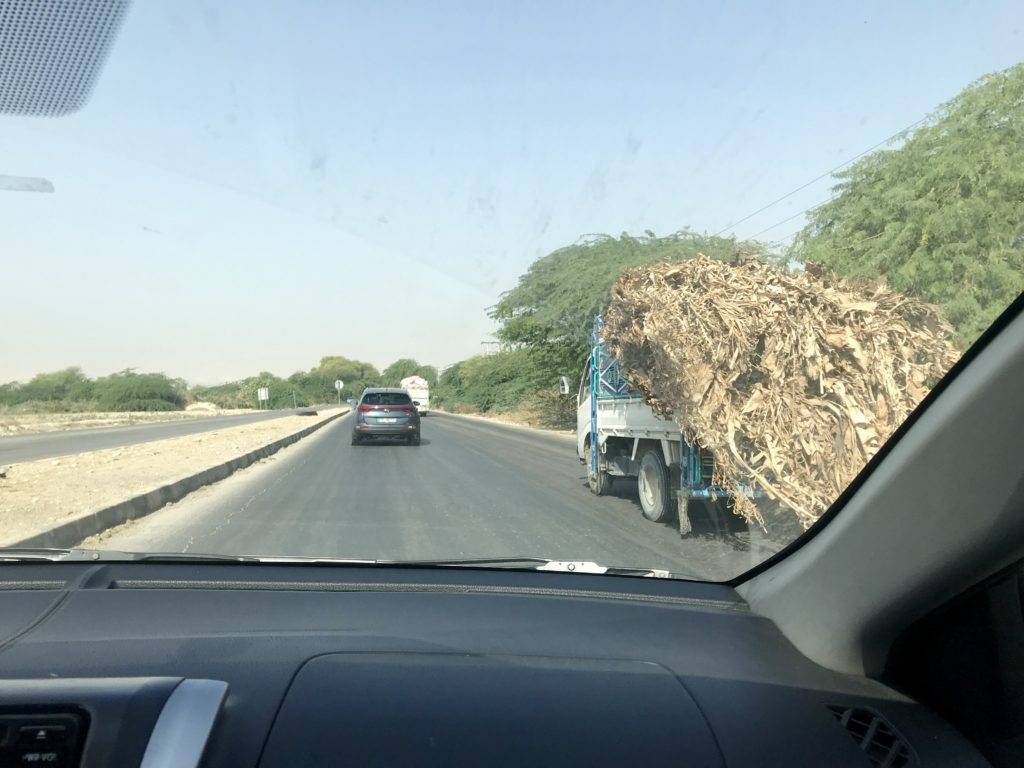
Yup that load looks pretty well secured to me
Keep your wits about you as the driving can be a little all of the place (okay, totally all over the place!). Imagine cars wandering aimlessly between lanes, vehicles suddenly stopping for no apparent reason, and trucks carrying large loads that are questionably secured, and you’ll get the picture.
I actually felt much safer in our hire car than the times we caught taxis or used local drivers. Many of the local cars don’t have seatbelts which makes me nervous (seatbelt safety was drilled into me as a child!) and I much preferred my husband’s driving to the ‘lax’ local driving style.
For short trips, if you don’t want to take the wai-wai express (that’s Kiwi for legs), then taxis are cheap by the meter.
3. What to Wear in Jordan
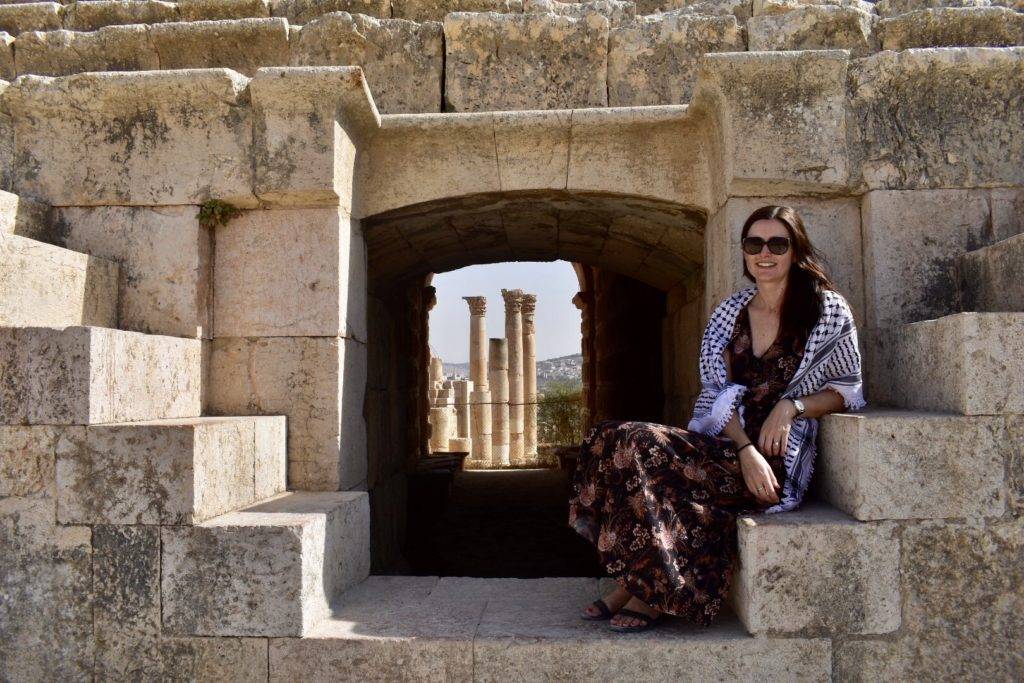
As with most Middle Eastern countries, Jordan local dress is more conservative than typical western dress. I saw tourists covered up and wearing western clothes alike, including short shorts.
However, around the cities and towns, I personally felt more comfortable in long loose cotton pants or a long skirt, plus a t-shirt, loose blouse or scarf to cover my shoulders.
We did alot of hiking, where I wore regular hiking clothes like leggings or shorts, including around Petra. Take hiking shoes with good tread even if you don’t plan to hike. There’s lots of rocky terrain around Petra and Wadi Rum, and my footing was much more confident with my steady-but-not-so-pretty hiking boots. (I’m no Insta-model, that’s fo-sho.) That said, we did see people navigating mountains in sandals and street shoes … so each to their own.
At the Dead Sea and Aqaba resorts, western beach clothing is acceptable. I was perfectly comfortable at our Dead Sea resort in regular sun dresses and bikinis.
4. Money and Costs
Jordan’s currency is the Jordanian Dinar. ATMs are widely available in Amman, larger towns, and tourist destinations. Take cash to smaller places, including small denominations for tips, taxis and snacks.
Check in advance whether your accommodation accepts credit cards. Our camps in Wadi Rum and Dana accepted cash only, which added up to a fair amount with meals and tours.
Surprisingly, Jordan is not a cheap travel destination, and prices can vary a lot. We stayed at midrange camps and guest houses for around JD30-40 per night, and two high end resorts for JD150-200 per night. Similarly, our meals ranged from JD1-2 for a local meal to JD10-20 for a ‘tourist’ meal.
Make sure you factor in the cost of activities. For example, a Wadi Rum jeep tour will be JD20-30 per person and entry to Petra is JD50. Most other entrance fees are JD1-5. Grab a Jordan Pass (see 4 below) if you plan to visit Petra.
5. Jordan Pass
One of the best Jordan travel tips is to purchase a Jordan Pass before you arrive in Jordan. The Jordan Pass is a tourist pass that covers the cost of your visa and entry to most of the main attractions in Jordan.
The Jordan Pass costs JD70, 75 or 80 with 1, 2 or 3 days Petra entry. Given that a visa is JD40 and Petra entry is JD50/55/60 for 1/2/3 days, this is excellent value indeed.
We also used the Jordan Pass for free entry to the Roman Ampitheatre and Citadel in Amman (JD2 and 3), Jerash (JD10), Wadi Rum (JD5), Kerak Castle (JD2), Ajloun Castle (JD3) and the Church of the Apostles in Madaba (JD3).
The only sites we visited that weren’t covered by the Jordan Pass were two Churches in Madaba (JD1 each) and the Dana Bisophere Reserve (JD8). Entry to Little Petra is free. Entry to the popular canyon hike at Wadi Mujib is JD21.
Buy your Jordan Pass in advance online.
6. Language
Jordanian’s speak Arabic, but English is widely spoken in tourist areas. Learning some key Arabic phrases like hello (mer-ha-ba) and thank you (shok-ran) will go a long way.
7. Locals
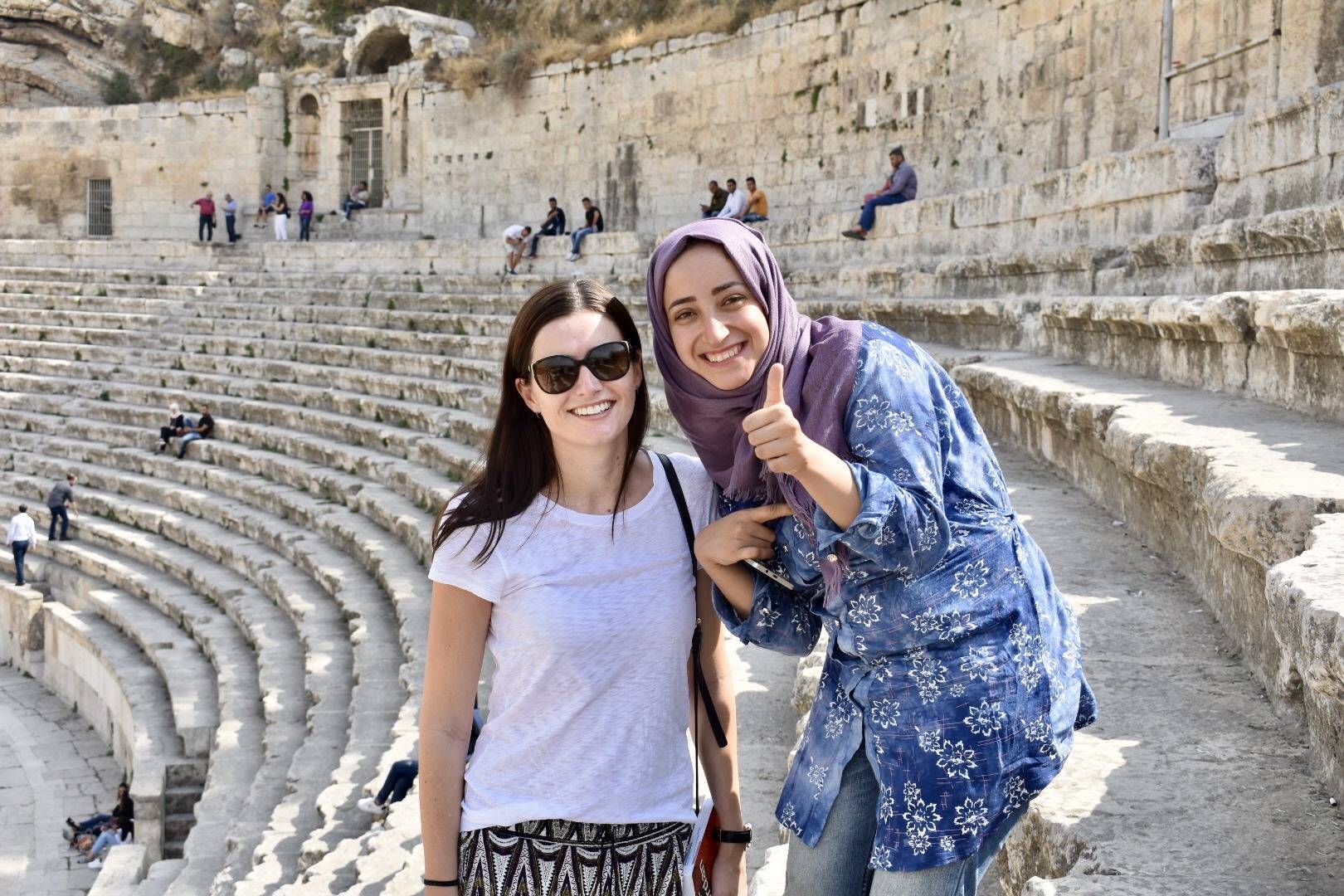
Jordan is quite possibly the most tourist friendly country I’ve ever travelled to. Jordanians are extraordinarily nice and will go out of their way to help you.
We had strangers insist on buying us a (non-alcoholic) drink, people giving us directions when we didn’t even realise we were lost (and yet somehow they knew where we were trying to go) and people stopping for a general chit-chat.
Oh, also, you will drink tea. Lots of tea. Whether you like it or not.
As with most tourist destinations, there will be touts and people offering their transport / food / souvenirs / tours to you. Happily, we found that the locals were not very pushy and a simple ‘thanks but no thanks’ sufficed. We even had many people thank us for replying ‘no’ to their offers!
8. Is it safe to visit Jordan?
The first question most people asked when we said we were travelling to Jordan was ‘is it safe?’. This isn’t surprising, as Jordan is wedged between other countries suffering tragic war and strife like Syria and Iraq. Since the Arab Spring, tourist numbers to Jordan have unfortunately dropped significantly.
However, Jordan is generally regarded as a safe place to travel to. I travelled with my husband and felt just as safe, if not safer, than most places in the world. We walked around Amman at night, left our bags locked in the car for the day and had tea with many locals without any issues at all.
The only minor annoyance was the constant ogling (even when I wore conservative clothing), but even then I never felt leered at or threatened. We got the impression that Jordanians take great pride in welcoming visitors, and that poor behaviour would be very frowned upon.
9. Food and Drink
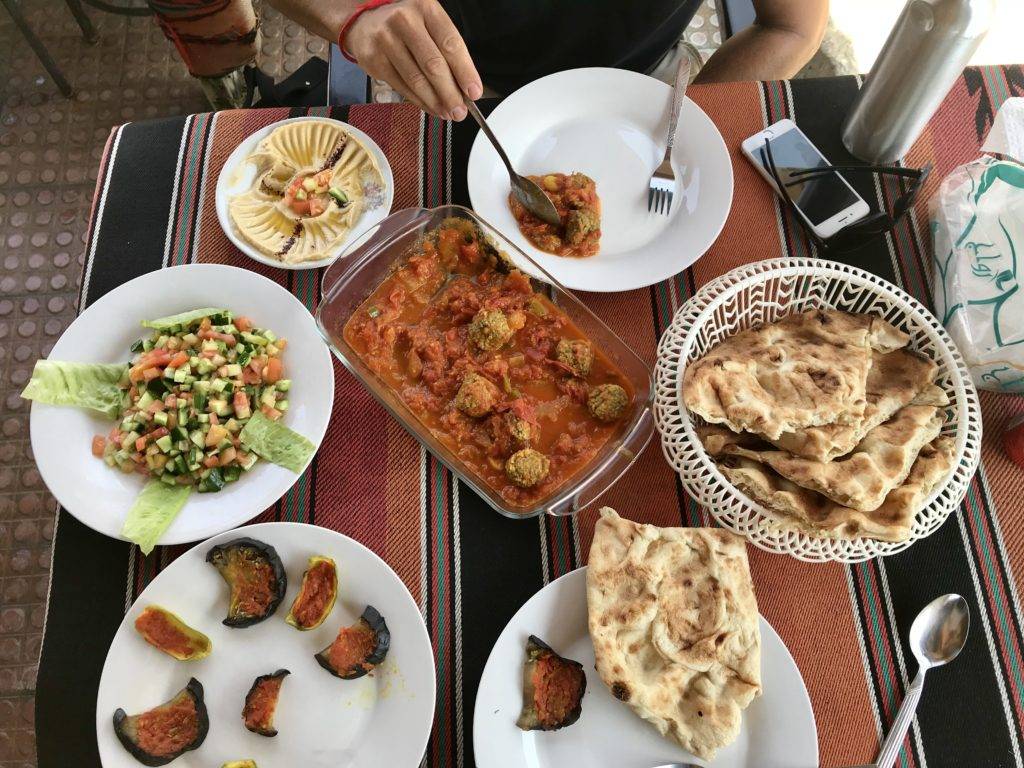
Typical Jordanian meal, nom nom
Food in Jordan is a real treat. Fare is typically Middle Eastern with a local Jordanian element. Basic, fresh and tasty!
Expect to devour plenty of falafel, dips (hummous, labneh, baba ganoush, mmmm), tomato and cucumber salad, bread (soooooo much bread!) and a selection of meats and vegetables.
We didn’t encounter as many grilled meats as I expected (based on my western notions of middle eastern food!). A local street food speciality is shawarma, which is grilled meat with sauces wrapped in thin bread. Pretty much the local equivalent of a dirty midnight drunken kebab back home.
I’m not usually a tea drinker, but tea is a big part of Jordanian daily life and hospitality, so it was close to impossible to refuse. Lucky for me, the local tea generally comes packed with sugar to disguise the tea taste!
Jordan is not a totally dry country, but with over 90% Muslim population, alcohol can be hard to come by and many restaurants, hotels and camps are dry. You’ll find alcohol at the great rooftop bars in Amman, at most larger international hotels, and at the excellent Cave Bar outside Petra’s entrance. I tell ya, a cold beer went down very nicely after 18km hiking around Petra!
10. General Jordan Travel Tips
I’m trying to think of things that were not so great about Jordan, and am coming up with close to peanuts. Here’s a few other Jordan travel tips and things to be aware of.
Smoking: It feels like every man and his dog smokes in Jordan (plus some children too). We found a packet of cigarettes which ended up being a great goodwill gesture to offer to locals who kindly offered tea, advice and directions.
Rubbish: While Jordanian’s take pride in their country, there’s a lot of rubbish and plastic littered around the cities and countryside.
Animals: My heart simultaneously swelled and ached for the friendly street cats, and plain hurt at the treatment of some (but not all) of the horses and donkeys carting people around Petra. We also didn’t see much in the way of wildlife in the nature reserves which was a little disappointing.
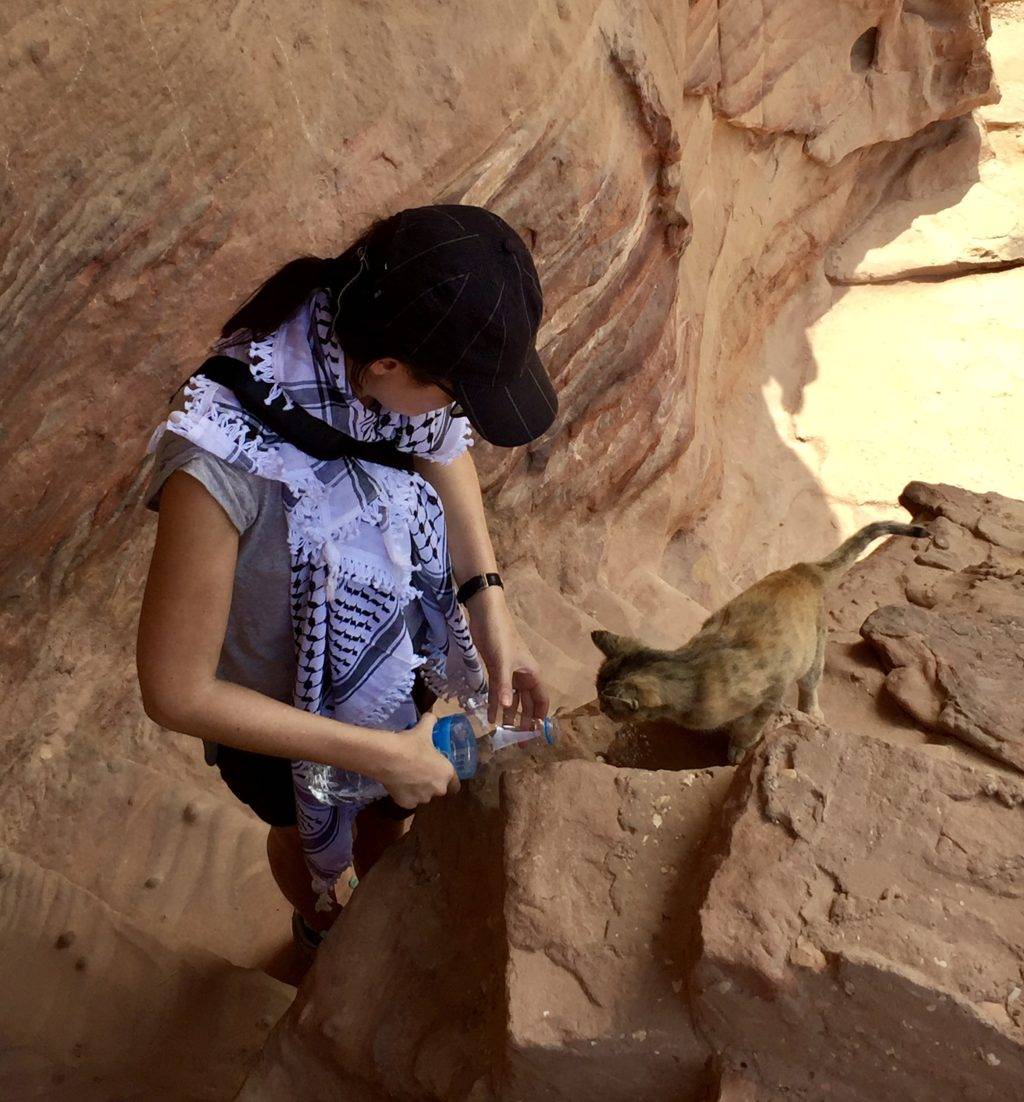
New cat friend #56
With these Jordan travel tips in mind, you’ll be ready to plan your perfect Jordan itinerary. Read my Jordan Itineraries post to get started!
Like it? Pin it!
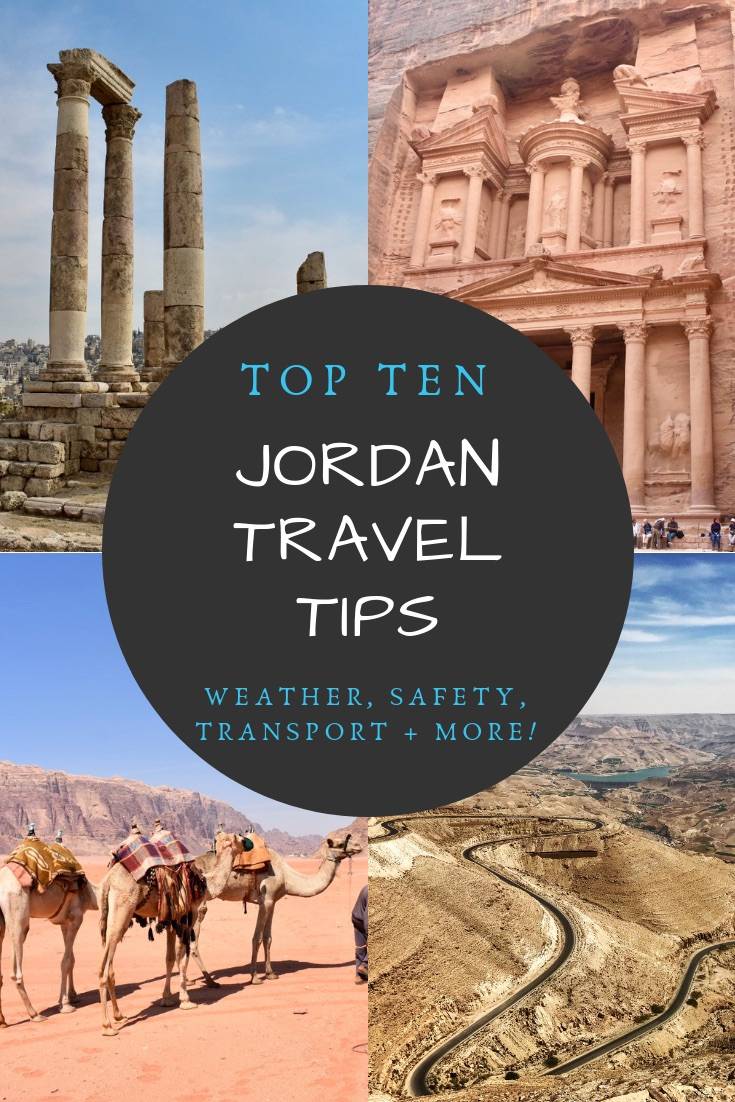
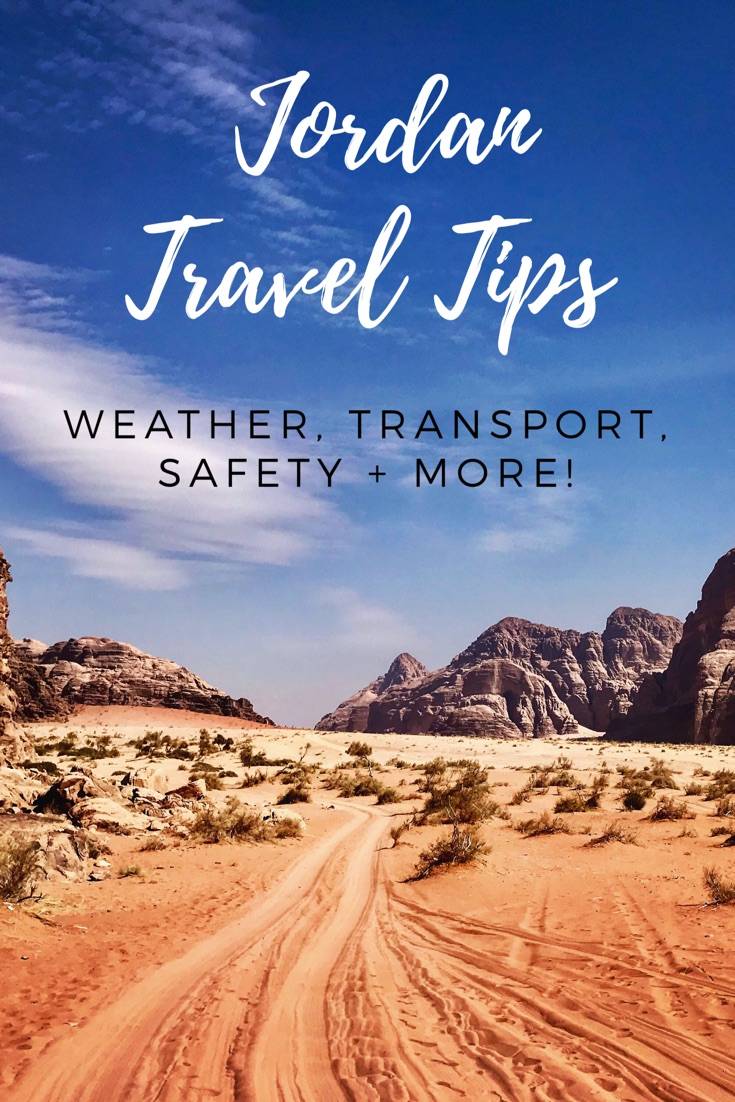


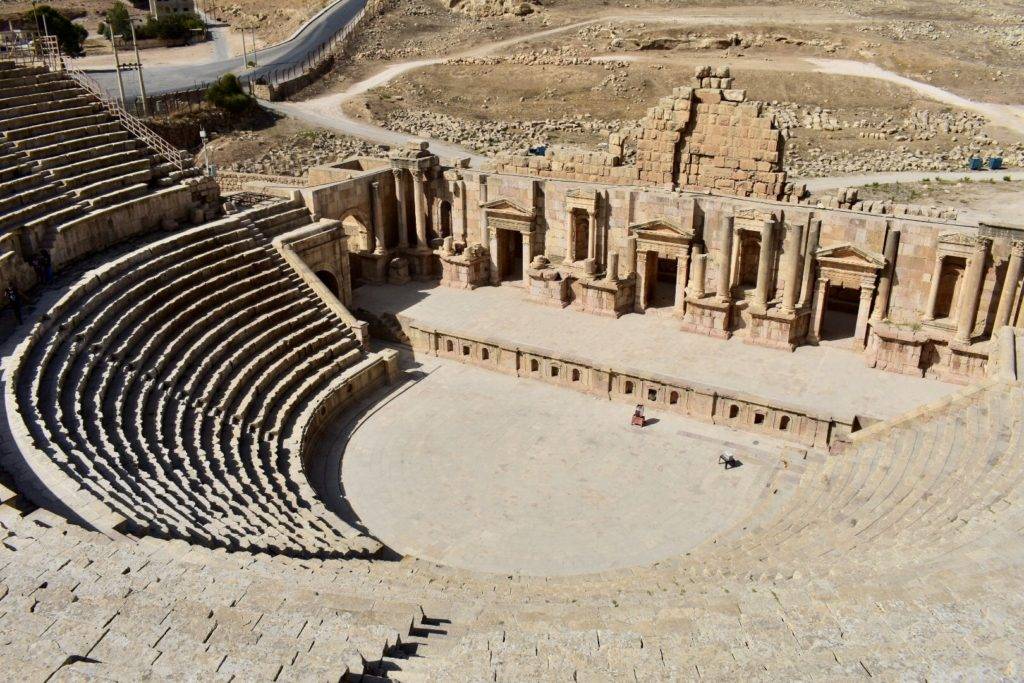
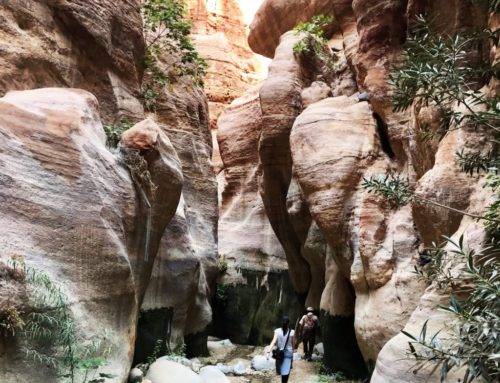
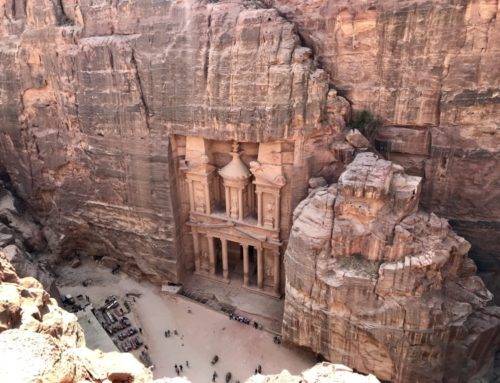
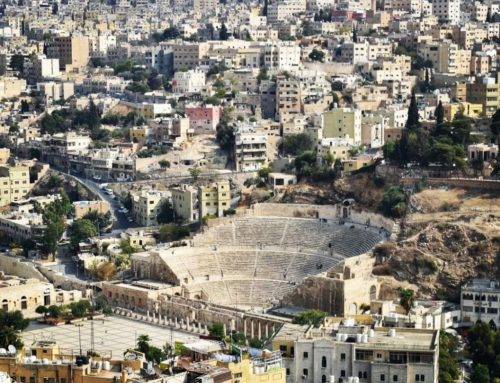
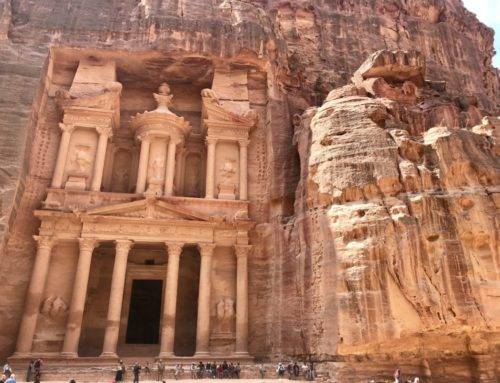
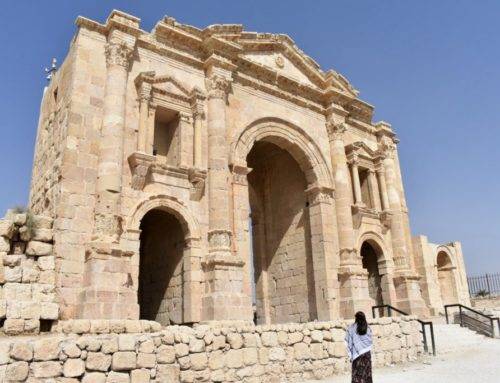
I went to Jordan back in May 2017, and I had the best time! One thing you’ve not mentioned much of is the street art everywhere in Amman, which is definitely worth a look!
Jordan is such a great country right?! You are right, we saw some really cool street art during our day in Amman.
I lived, worked and even married a man from Jordan and have such love, respect and fondness for Jordan! 🥰🇯🇴
That’s fantastic to hear! Jordan certainly is a special country, and I hope to visit again one day.
Thanks for the tips, very easy to read and enjoyable 👍